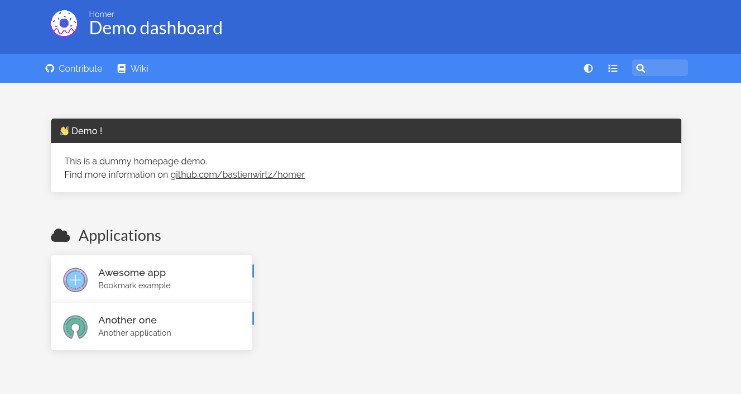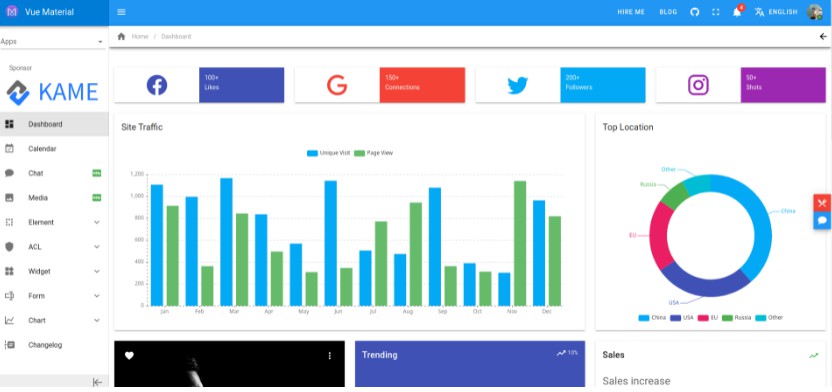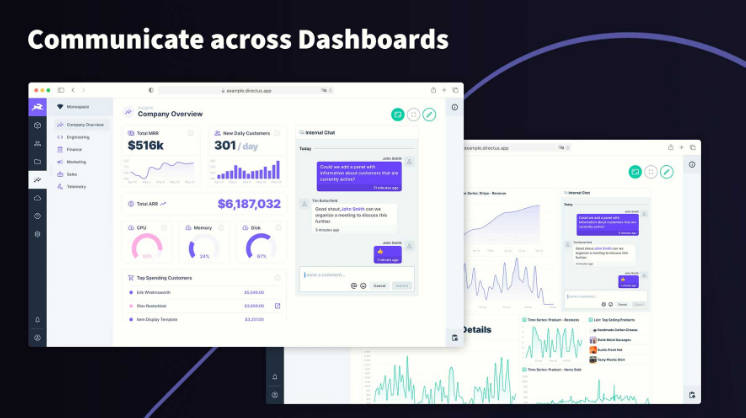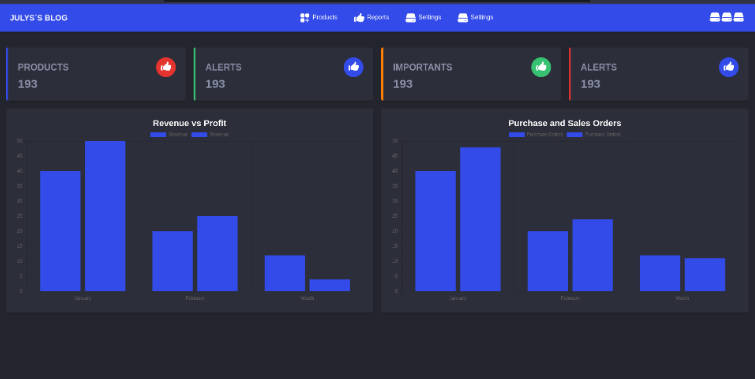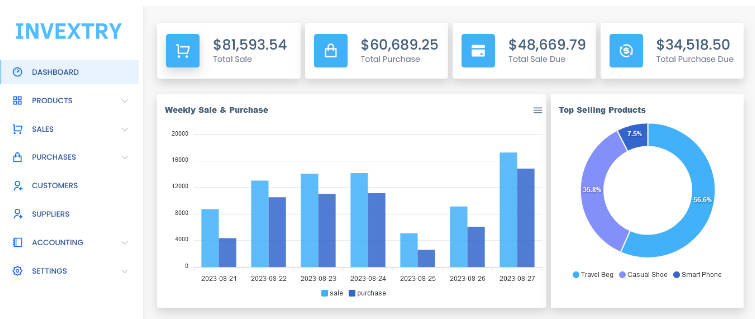
Homer
A dead simple static HOMepage for your servER to keep your services on hand, from a simple yaml configuration file.
Demo
•
Chat
•
Getting started
Table of Contents
Features
- yaml file configuration
- Installable (pwa)
- Search
- Grouping
- Theme customization
- Offline heath check
- keyboard shortcuts:
/Start searching.EscapeStop searching.EnterOpen the first matching result (respects the bookmark’s_targetproperty).Alt/Option+EnterOpen the first matching result in a new tab.
Getting started
Homer is a full static html/js dashboard, generated from the source in /src using webpack. It’s meant to be served by an HTTP server, it will not work if you open dist/index.html directly over file:// protocol.
See documentation for information about the configuration (assets/config.yml) options.
Using docker
To launch container:
docker run -d \
-p 8080:8080 \
-v </your/local/assets/>:/www/assets \
--restart=always \
b4bz/homer:latest
Default assets will be automatically installed in the /www/assets directory. Use UID and/or GID env var to change the assets owner (docker run -e "UID=1000" -e "GID=1000" [...]).
Using docker-compose
The docker-compose.yml file must be edited to match your needs.
Set the port and volume (equivalent to -p and -v arguments):
volumes:
- /your/local/assets/:/www/assets
ports:
- 8080:8080
To launch container:
cd /path/to/docker-compose.yml
docker-compose up -d
Default assets will be automatically installed in the /www/assets directory. Use UID and/or GID env var to change the assets owner, also in docker-compose.yml:
environment:
- UID=1000
- GID=1000
Using the release tarball (prebuilt, ready to use)
Download and extract the latest release (homer.zip) from the release page, rename the assets/config.yml.dist file to assets/config.yml, and put it behind a web server.
wget https://github.com/bastienwirtz/homer/releases/latest/download/homer.zip
unzip homer.zip
cd homer
cp assets/config.yml.dist assets/config.yml
npx serve # or python -m http.server 8010 or apache, nginx ...
Build manually
# Using yarn (recommended)
yarn install
yarn build
# **OR** Using npm
npm install
npm run build
Then your dashboard is ready to use in the /dist directory.
